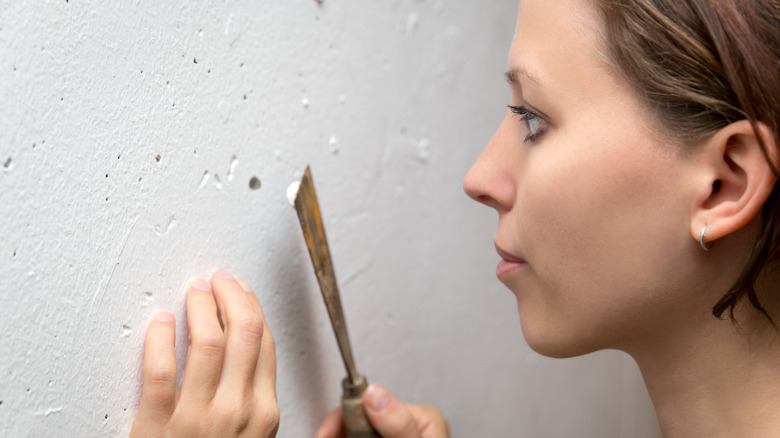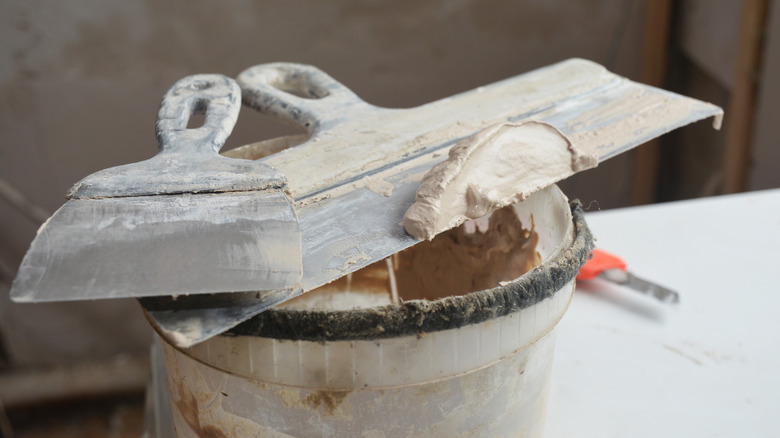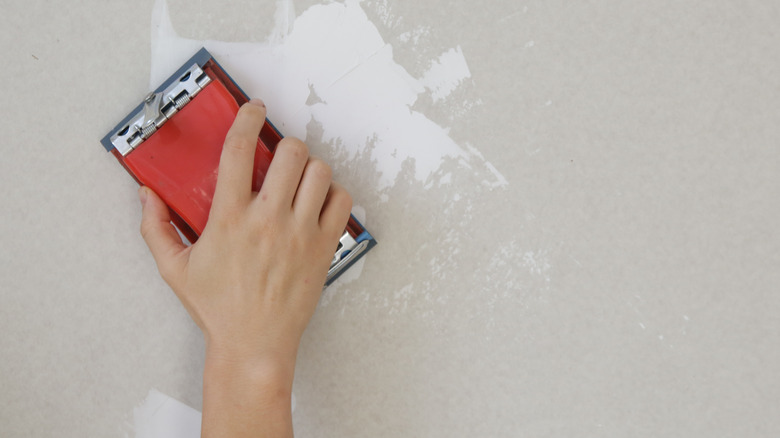The Best Way To Fill Nail Holes In Your Drywall
Holes in drywall are a common problem, but fixing small ones is actually pretty easy and can be done in a single day. In drywall, there are two main types of holes that may occur: drywall screw depressions (called divots), which appear when drywall is initially attached to the studs, and actual holes, which occur when wall anchors, screws, or nails are used. Divots aren't deep, appearing just below the surface of the drywall paper coating. These indentations need to be filled prior to paint being applied. In finished walls, holes can occur when heavy or semi-permanent items like art, cabinetry, or shelving are secured with anchors.
Luckily, both types are simple to repair with ordinary drywall joint compound (the pre-mixed, all-purpose kind) or spackle, which dries faster and is lighter but shouldn't be used for larger holes. Tiny divots and holes can often be filled completely with a single pass of compound, but deeper ones will often need a second coat. This is because as the mixture dries, it shrinks a bit.
For this DIY project, you'll need some all-purpose drywall joint compound, a fine grit sanding block or paper, a paper towel or lint-free cloth, a putty or utility knife, a screwdriver, and a taping compound tray. Additionally, larger holes may require a self-adhesive drywall mesh, explains Lowe's.
Smooth the edges for perfect application
Look carefully at the edges of the hole for torn or jagged drywall paper. Pro Tool Reviews says these edges will need to be trimmed with a utility knife to create a smooth surface for the compound. Sometimes, instead of trimming the paper, the edges can be gently pushed back into the hole. If neither of these suggestions work and the surface is still rough or the paper is puckering, carefully slice through just the paper and peel it away.
Once the surface feels smooth to the touch, you are ready to begin applying the compound. Next, using your putty knife, scoop a small amount of mud onto just one side of the blade. Too much mud will make for more cleanup, so it's best to start with a little. If any mud is hanging from the knife or ended up on the other side of it, simply wipe it away with a towel.
Application is quick and easy
Most dimples and minute holes can be filled with just one application. According to The Home Depot, applying a small amount of spackle to the tip of your finger and pressing it against the divot is often effective. For slightly larger holes, it is better to use a putty knife. My First Apartment says to draw the mudded side of the knife across the hole with the blade facing the wall at about a 30-degree angle. If a dimple remains, quickly pass over it again with more compound. Once the hole is fully filled, position the drywall knife perpendicular to the wall (at 90 degrees) and slide across the fresh mud to scrape off any excess and flatten it out so it's flush with the wall. It's important to not do this repeatedly because additional passes can drag some of the compound from the hole.
Let the compound dry completely according to the directions on the product label. If the dried compound has cracks or shrinks inward, a second application is necessary. Once set, run your fingers over the area to feel for any rough or uneven spots. If necessary, use a low grit sanding block or sandpaper to gently smooth imperfections away. Be careful with this step, advises Sander Score, because the drywall paper can be easily damaged by vigorous or excessive sanding.


